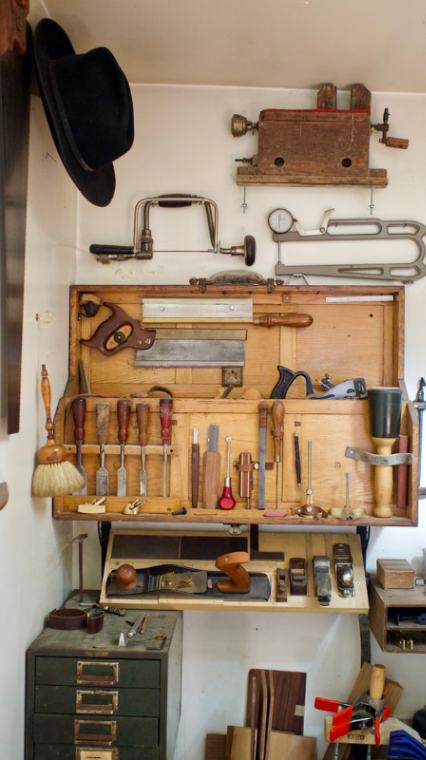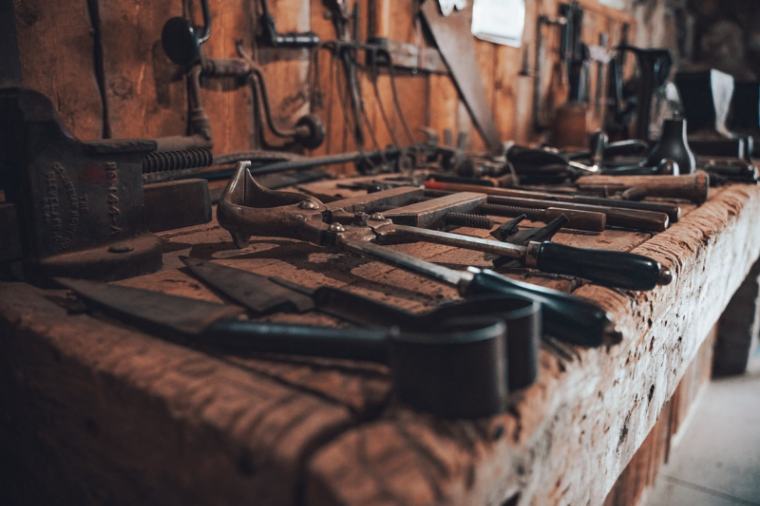Introduction to Furniture Repair
Welcome to our blog post on how to repair furniture like a professional! Whether you have a cherished antique piece that needs some tender loving care or simply want to breathe new life into your worn-out furniture, learning the art of furniture repair can save you time and money.
In this comprehensive guide, we will walk you through the step-by-step process of repairing various types of damage, from scratches and dents to loose joints and broken legs. So grab your tools and get ready to unleash your inner DIY expert as we show you how to transform tired furniture into stunning pieces that will stand the test of time!
Tools and Materials You Will Need

Having the right tools and materials is essential when repairing furniture like a professional. Here are some of the key items you should have on hand:
1. Screwdrivers: A set of screwdrivers with different sizes and types of heads will come in handy for removing screws.
2. Wood glue: This adhesive is perfect for fixing loose joints or broken pieces of wood.
3. Sandpaper: Different grits of sandpaper can be used to smooth out rough surfaces or prepare them for refinishing.
4. Clamps: These are helpful for holding pieces together while the glue dries, ensuring a strong bond.
5. Putty knife: Use this tool to apply wood filler to any cracks or holes in your furniture.
6. Stain or paint: Depending on the finish you desire, choose either stain or paint that matches your piece.
7. Varnish or sealant: Applying varnish will protect your repaired furniture from future damage and give it a polished look.
Remember to also gather protective gear such as gloves, safety goggles, and dust masks before starting any repair project – safety first!
With these tools and materials at your disposal, you’ll be well-equipped to tackle various types of furniture repairs confidently! So, let’s roll up our sleeves and get started!
Common Types of Furniture Damage and How to Fix Them

1. Scratches: One of the most common types of damage on furniture is scratches. Sc scratches can make your furniture look worn and aged, whether caused by pets, moving furniture, or everyday wear and tear. To fix minor scratches on wooden furniture, you can use a wax crayon that matches the color of the wood. Simply rub the crayon over the scratch until it’s filled in.
2. Water Stains: Accidental spills or condensation from glasses can leave unsightly water stains on your wooden furniture. Mix equal parts vinegar and olive oil in a bowl to remove water stains. Dip a soft cloth into the mixture and gently rub it onto the stain in circular motions until it fades away.
3. Loose Joints: Over time, joints on chairs, tables, and other pieces of furniture may become loose due to constant use or changes in humidity levels. To fix loose joints, you will need some woodworking glue and clamps. Apply glue to both joint surfaces and tightly clamp them together for at least 24 hours.
4. Broken Legs or Supports: If a leg or support on your furniture has broken off completely, don’t worry – it can be fixed! First, use sandpaper or a chisel if necessary to clean any debris from both surfaces. Then apply wood glue to both surfaces before securing them with screws or nails.
Remember that these are just some common types of damage you may encounter when repairing furniture at home! The specific methods used for repair will depend on factors such as material type (wood vs upholstery) as well as the severity of damage.
Step-by-Step Guide to Repairing Furniture
Step 1: Assess the Damage
Before you begin repairing your furniture, it’s important to assess the extent of the damage. Please be sure to look closely at any scratches, dents, or loose joints that need attention. This will help you determine what tools and materials you’ll need for the job.
Step 2: Gather Your Tools and Materials
You’ll need a few basic tools and materials to repair furniture like a pro. Some essentials include sandpaper in various grits, wood glue, clamps, putty knife, stain or paint (if necessary), and touch-up markers. Having these items on hand will make the process much smoother.
Step 3: Prep the Surface
Could you start by cleaning the damaged area with a mild soap and water solution? Once dry, use sandpaper to smooth out any rough edges or surfaces. This step is crucial as it helps create a clean surface for better glue adhesion or other repair materials.
Step 4: Repair Loose Joints
Applying wood glue can help restore stability if your furniture has loose joints. Apply a generous amount of adhesive to both surfaces that must be joined together. Then, use clamps to hold them while the glue dries completely.
Step 5: Fill Scratches and Dents
For minor scratches and dents on wooden surfaces, fillers can be used to even out imperfections. Choose an appropriate filler color that matches your furniture’s finish for seamless repairs. Apply according to product instructions using a putty knife and allow it to dry before sanding down excess material.
Step 6: Finish Up
Once all repairs have been made and dried properly, it’s time to finish up! Sand down any repaired areas until they are smooth with surrounding surfaces. If needed, apply stain or paint followed by a clear coat for added protection.
Repairing furniture may seem daunting initially, but following these step-by-step guidelines should give you the confidence to tackle the task like a pro. With a little time,
Tips for Maintaining Your Repaired Furniture
Once you have successfully repaired your furniture, it is important to take steps to maintain its newly restored condition. Proper maintenance can help prevent future damage and keep your furniture looking its best for years. Here are some tips to help you maintain your repaired furniture:
1. Keep it clean: Regularly dusting and cleaning your furniture will not only keep it looking fresh but also remove any dirt or debris that could potentially cause scratches or other damage.
2. Use coasters and placemats: To protect the surface of your repaired furniture from water rings, heat marks, or food stains, always use coasters and placemats when placing drinks or hot dishes on the surface.
3. Avoid direct sunlight: Prolonged exposure to sunlight can fade and damage the finish of your furniture. Consider using curtains or blinds to block out direct sunlight during peak hours.
4. Handle with care: Treat your repaired furniture gently by avoiding dragging or dropping heavy objects on it. Lift rather than drag items across surfaces to prevent scratching.
5. Repair minor issues promptly: If you notice any small chips, scratches, or loose screws on your repaired furniture, address them promptly before they worsen and require more extensive repairs.
6. Follow manufacturer’s instructions: If you used specific products during the repair process (such as wood polish), follow the manufacturer’s instructions for their ongoing use in order to preserve the integrity of the repair work.
By following these simple tips, you can ensure that your newly repaired furniture remains in top-notch condition for years to come!
DIY vs Hiring a Professional: Which Option is Best?
When it comes to repairing furniture, you may find yourself faced with a decision: should you tackle the job yourself or hire a professional? Both options have pros and cons, so it ultimately depends on your skill level, damage extent, and budget.
DIY furniture repair can be a rewarding experience for those who are handy and enjoy working with their hands. It saves you money on labor costs and gives you full control over the process. You can research techniques online, watch tutorials, and experiment until you achieve the desired results. However, DIY furniture repairs require time, patience, and expertise. If you need more confidence in your abilities or if the damage is extensive or complex (such as structural issues), it’s best to leave it to the professionals.
Hiring a professional furniture repair service offers several advantages. They have years of experience dealing with various types of damage and are equipped with specialized tools that may be limited to DIYers. Professionals also possess an eye for detail and can seamlessly restore your furniture to its former glory. Additionally, they often offer warranties on their workmanship, which provides peace of mind, knowing that any potential future issues will be addressed at no extra cost.
However, hiring professionals also comes at a price – literally! The cost of labor can significantly increase the overall expense compared to doing it yourself. Additionally, scheduling appointments may take time, depending on their availability.
When deciding between DIY and hiring a professional for furniture repair, consider factors such as your skills/experience level, time constraints, budget, and complexity/extent of damage.
DIY might be worth considering if you have confidence in your abilities and enjoy hands-on projects. However, in cases of extensive damage or a lack of expertise, it’s wise to invest in professional help. The choice ultimately rests upon weighing these factors against each other before making a well-informed decision.
Conclusion on Repairing Furniture

Repairing furniture can be a rewarding and cost-effective way to restore the beauty and functionality of your favorite pieces. With the right tools, materials, and techniques, you can tackle common types of damage like scratches, dents, and loose joints like a professional.
Remember to start by assessing the damage and gathering all the necessary supplies before diving into the repair process. Take your time and follow each step carefully for the best results. And remember to maintain your repaired furniture properly to ensure its longevity.
While DIY repairs can be fulfilling, sometimes it’s best to leave complex or delicate repairs in the hands of professionals. They have the expertise and experience to handle intricate restoration projects requiring advanced skills or specialized equipment.
Whether you repair your furniture or hire a professional, always prioritize quality craftsmanship and attention to detail. Your repaired furniture will look great and stand the test of time with proper care.
So go ahead – grab those tools, put on some protective gear, and get ready to bring new life back into your beloved pieces! Happy repairing!
Remember: practice makes perfect when it comes to furniture repair! So feel free to take on smaller projects first before tackling larger ones. With time and experience under your belt, you’ll soon become an expert at rejuvenating old furniture like a pro!